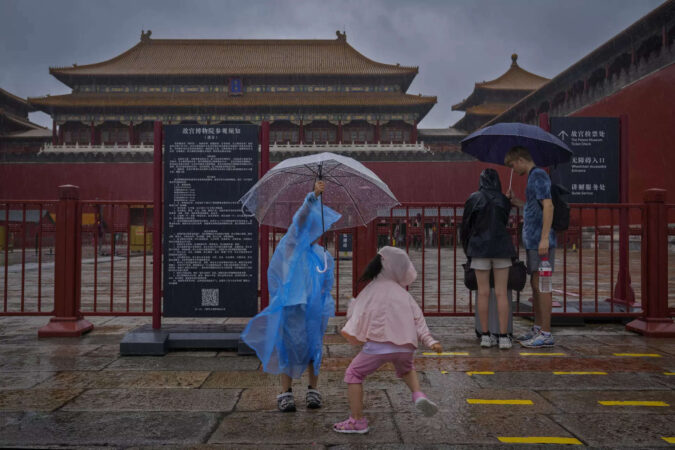The deadly storm has been sweeping northeast over China since Friday, when it careened into the southern Fujian province after battering the Philippines.
The Chinese capital and surrounding region were drenched over the weekend, with officials warning of potentially hazardous conditions including floods, swelling rivers, mudslides and landslides.
More than 27,000 people in high-risk areas of Beijing have been evacuated, and another 20,000 were relocated from parts of Hebei’s capital Shijiazhuang, state media said.
Hundreds of millions of people in northern China, including in Beijing, remain under a red alert — the highest level — for heavy precipitation through at least Monday afternoon.
It is the first time since 2011 that such a heavy rainfall warning has been issued, according to local media.
Beijing residents were urged not to go outside unless necessary, advice that appeared widely heeded with the usually buzzing streets empty of many cars or pedestrians.
Many popular sites in the capital were temporarily closed, including the Forbidden City, libraries and museums.
The sprawling National Centre for the Performing Arts, located near Tiananmen Square, cancelled opera and musical performances scheduled for Sunday.
China has posted record temperatures this summer, with scientists saying the extreme weather was being exacerbated by climate change.
Doksuri was initially categorised as a super typhoon as it tore across the Pacific Ocean earlier this week, but it lost some intensity as it neared the Philippines, where it killed more than a dozen people.
It still brought colossal waves and howling winds of up to 175 kilometres per hour (110 miles per hour) to China’s southeast on Friday, causing significant damage.
More than 880,000 people in Fujian province were affected by the storm, state media said Sunday.
